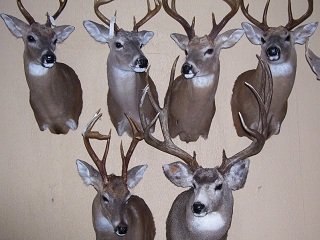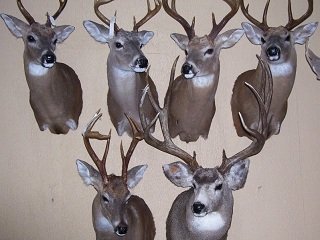 If you hunt long enough, you will end up making a trip to the taxidermist. Too often though, a hunter’s excitement of having a trophy mounted is ruined by bad news due to the hunter not properly taking care of his/her trophy. Here are three things that you should know to make your trophy mounting experience a positive and happy occasion.
If you hunt long enough, you will end up making a trip to the taxidermist. Too often though, a hunter’s excitement of having a trophy mounted is ruined by bad news due to the hunter not properly taking care of his/her trophy. Here are three things that you should know to make your trophy mounting experience a positive and happy occasion.
Fighting Bacteria. Once an animal is dead, bacteria starts to break down its tissue. This means that anything with hair is in an instant war with bacteria as soon as it hits the ground. If not properly and hastily presented to a taxidermist in a timely manner, the bacteria could cause the cape or hide to lose its hair. This is called ‘slipping’ and it ruins thousands of trophies annually. Be smart and don’t let this happen to you.
Don’t spend too much time parading your trophy around town showing it off. You can do that after it is mounted. Another thing to remember is that the warmer it is, the faster the bacteria will go to work. Heat and moisture are bacteria’s best friends, so avoid mixing the two. Never put your cape in a plastic bag unless it is going straight to a freezer.
Proper Cuts. It is every hunter’s responsibility to know how to cape or skin an animal. If you don’t know how to skin and cape, buy a DVD or go to your local taxidermist and ask them to explain what to do. I have seen hundreds of capes ruined because hunters either cut the cape too short, or they cut in the wrong places. A good rule of thumb for skinning deer capes is to never cut in the white.
The arm pits are white and your knife should never cut through the white patched of hair. Always use hair lines as a guide to make your cuts. The back of every deer has a distinctive line where hair comes together and forms a tiny Mohawk like hair pattern that you should use to cut in. Taxidermists are not magicians, so find out what they need and help them do the best job possible for your hunting memory.
What is a trophy? To most hunters, every animal is a trophy. However, due to the peer pressure of today’s hunting shows, DVDs, and magazine covers, some hunters get too intimidated to bring an average deer in to be mounted. If a particular kill is a trophy to you or a loved one, have it mounted and preserved for a lifetime of enjoyment.
You know those old antlers or horns on the wall that your father or grandpa killed 30 years ago? You can have that mounted by simply getting a replacement cape. Taxidermists love to bring old memories back to life and having old antlers mounted is a great way to honor the past.








